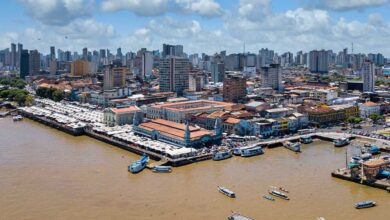
Brazil Emerges as Environmental Powerhouse in the G20 and Prepares to Lead COP30
With 30% of its territory under protection and the planet’s richest biodiversity, the country takes center stage in the future of global sustainability.
By Vicente Crispino
Environmental protection is more than an ethical choice—it’s a strategic imperative. In this regard, Brazil has been asserting itself with growing strength among the world’s largest economies. According to a new study released by the Brazilian Institute of Geography and Statistics (IBGE), the country ranks among the top five G20 members with the highest percentage of protected areas, both terrestrial and marine. It’s a well-earned recognition that deserves to be celebrated—and followed by ongoing action.
Currently, Brazil protects 30.6% of its land territory and 26.7% of its marine areas—figures well above the global minimum targets set by the Convention on Biological Diversity. These numbers carry even greater weight when one considers that Brazil is home to the world’s richest biodiversity, including vital biomes like the Amazon, the Cerrado, and the Atlantic Forest, all of which are essential to climate balance and the preservation of life in all its forms.
In addition to having rigorous environmental legislation—particularly the National System of Conservation Units (SNUC)—Brazil has demonstrated strong institutional capacity to expand its environmental protection efforts. The creation of large marine reserves around the Trindade and São Pedro and São Paulo archipelagos, for instance, has established Brazil as the leading G20 nation in the Americas when it comes to ocean conservation commitments.
But Brazil’s environmental leadership doesn’t stop there. Later in 2025, the world will turn its attention to the Amazon rainforest as Belém hosts COP30. It will be a historic milestone: for the first time, the world’s premier climate conference will take place in the heart of the planet’s largest tropical forest. This not only elevates Brazil to a new level of environmental influence but also gives the city of Belém a unique opportunity to showcase its culture, resilience, and sustainable vision.
Of course, challenges remain. The decline in native vegetation cover over the past decades calls for constant vigilance and effective public policy. However, the recent slowdown in deforestation suggests progress is being made. Conserving nature is not a barrier to growth—it’s the key to truly lasting development.
Brazil has both the duty and the privilege of being a guardian of life on Earth. By combining biodiversity, institutional commitment, and environmental diplomacy, we can become a viable and necessary example for the world. Let COP30 be more than an event—let it be a turning point. A pact for the Amazon. A new beginning for the planet.







